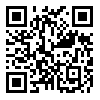Received: 2010/01/21 | Accepted: 2014/06/24 | Published: 2014/06/24
URL: http://ijwph.ir/article-1-50-en.html
BibTeX | RIS | EndNote | Medlars | ProCite | Reference Manager | RefWorks
Send citation to:
Introduction : Handicapped people, who exclusively depend on manual wheelchair for locomotion, face great difficulties. Because they have constant pain in their upper-extremity members, mainly in the shoulder, elbow and the wrist. Manual propulsion can be considered a cyclical effort, thus the pains are symptoms of injuries from repetitive efforts.
Purpose : The aim of this paper is to determine the dynamical efforts over the shoulder and elbow joints during the manual wheelchair propulsion using the Lagrange equations and the inverse dynamic techniques.
Results : As a result, it is possible to establish a system of equations and thus evaluate the efforts over the joints. Another result is the possibility to simulate the system using the anthropometric values of real subjects aiming at making it easier to choose the best wheelchair.
Discussion : Besides the study of the propulsion pattern, allows physical training aimed at improving the propulsion efficiency.








